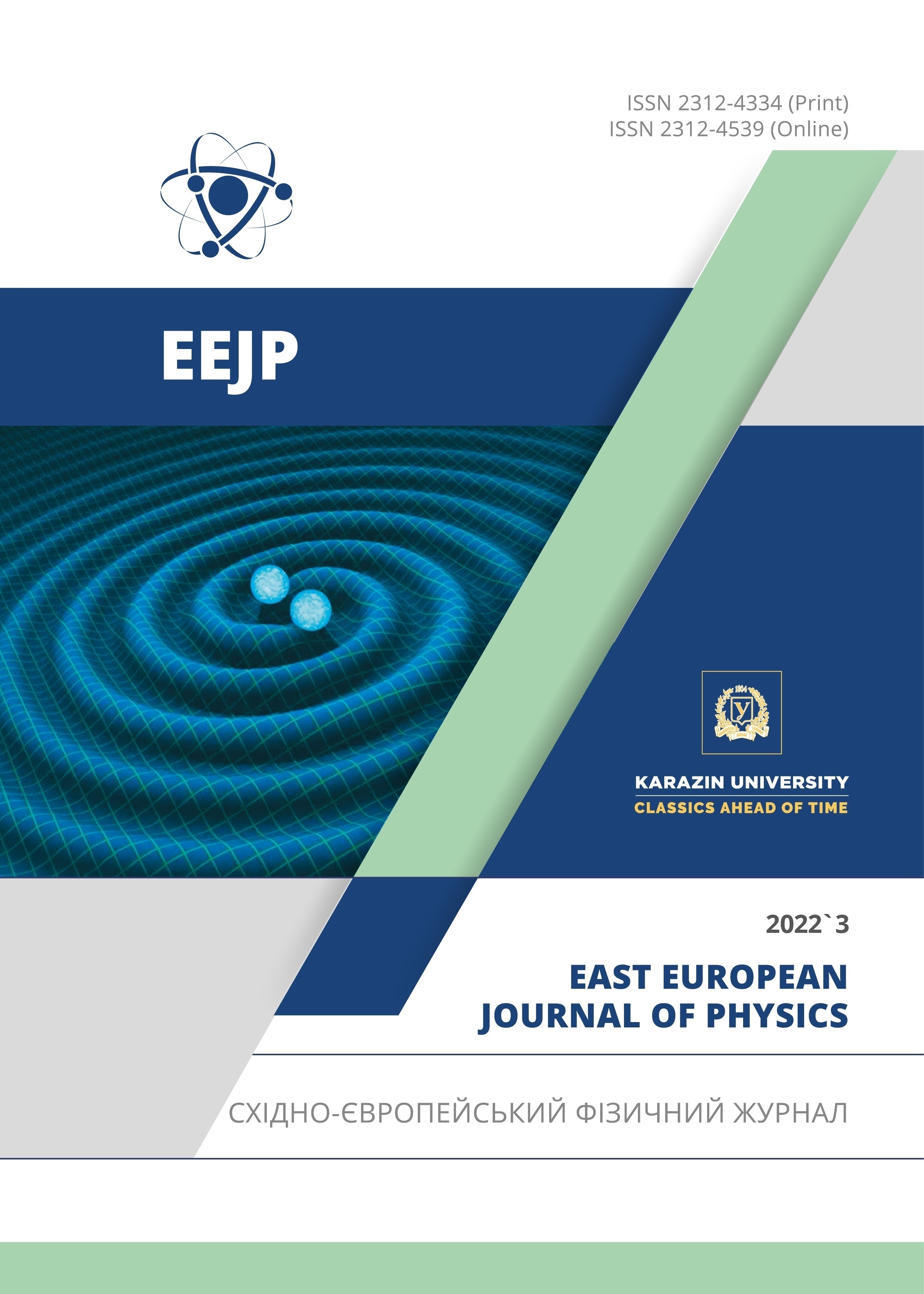Sample Preparation for the Effective Accumulation and Detection of the Beta-Active Rn-222 Decay Products
Abstract
The sample preparation method and the results of experimental measurements of the concentration of beta-radioactive aerosols (the decay products of Radon-222 in the air) are presented. The experimental equipment includes an electrostatic aerosol collector and a time spectrometer based on the PMT with a plastic scintillator and Wilkinson’s ADC. The accumulation of aerosols on the foil lasted for about 12 hours. The activity of accumulated aerosols was measured in the time interval of 0 to 300 minutes. The use of the spectrometer in the time analyzer mode, the proposed aerosol accumulator, and the method of processing the accumulated spectrum makes it possible to increase the sensitivity of the radiometer in comparison with the collection method based on air filters. Applying the time‑spectrum development procedure to the constituent components makes it possible to reliably establish the connection of aerosols registered in the room with β‑active decay products of radon-222: Po-218, Pb-214, Bi-214.
Downloads
References
I. Grigoriev, E. Meilikhov, and A. Radzig, Handbook of Physical Quantities, 1996.
L. Yuan, S. Geng, B. Luo, J. Wu, and J. Wang, Yuan, in: Proceedings of the 2016 International Forum on Energy, Environment and Sustainable Development, (Atlantis Press, 2016). https://doi.org/10.2991/ifeesd-16.2016.5
F. Mamedov, P. Čermák, J. Jakůbek, K. Smolek, I. Štekl, and J, Vlášek, Journal of Instrumentation, 8, C03011 (2013). https://doi.org/10.1088/1748-0221/8/03/C03011
I.I. Yakimenko, N.G. Styervoyedov, A.F. Shchus, and, G.M. Onyshchenko, Radon-222 Detection Using Beta-Decay Products, East Eur. J. Phys. 3(2), 65 (2016). https://doi.org/10.26565/2312-4334-2016-2-09
S.-Y. Chang, C.-W. Ha, and B.-H. Lee, “Measurement of Radon-222 Exhalation Rate from Building Materials by Using CR-39 Radon Cup”, Journal of Radiation Protection, 16(1), (1991). https://www.jrpr.org/upload/pdf/BSBOB5_1991_v16n1_15.pdf
S.A. Durrani, and R.K. Bull, Chapter 2 - Interactions of Charged Particles with Matter, in: Solid State Nuclear Track Detection, edited by S.A. Durrani, and R.K. Bull, (Pergamon, 1987), pp. 13-22, https://doi.org/10.1016/B978-0-08-020605-9.50006-X
P. Jovanovic, Radon exhalation rate measurements on and around the premises of a former coal mine, Science of The Total Environment, 272(1–3), 147 (2001), https://doi.org/10.1016/S0048-9697(01)00681-7
D. Austen, and W. Brouwer, Radioactive balloons: experiments on radon concentration in schools or homes, Physics Education, 32(2), 97 (1997). https://doi.org/10.1088/0031-9120/32/2/016
Copyright (c) 2022 Gennadiy Onyshchenko, Ivan Yakymenko, Oleksandr Shchus, Anatoliy Lokha

This work is licensed under a Creative Commons Attribution 4.0 International License.
Authors who publish with this journal agree to the following terms:
- Authors retain copyright and grant the journal right of first publication with the work simultaneously licensed under a Creative Commons Attribution License that allows others to share the work with an acknowledgment of the work's authorship and initial publication in this journal.
- Authors are able to enter into separate, additional contractual arrangements for the non-exclusive distribution of the journal's published version of the work (e.g., post it to an institutional repository or publish it in a book), with an acknowledgment of its initial publication in this journal.
- Authors are permitted and encouraged to post their work online (e.g., in institutional repositories or on their website) prior to and during the submission process, as it can lead to productive exchanges, as well as earlier and greater citation of published work (See The Effect of Open Access).








